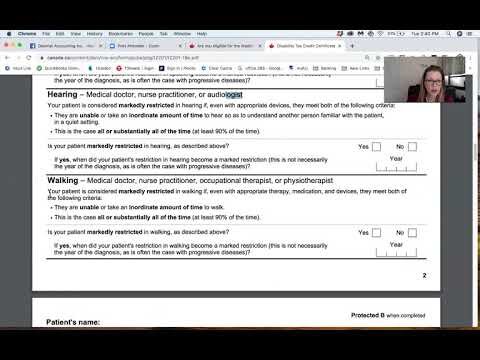Full-Time Equivalent FTE: Meaning & Examples
Contents:


Then we shall take the number of hours a particular employee spends within the working week . When using FTE alongside other performance metrics, it can become easier to understand per-employee costs and output in a large organization. For example, comparing the two groups over time allows an organization to find opportunities to improve efficiency when hiring seasonally or when making part-time and full-time staffing decisions. Divide the total number of hours by 2080, and that ultimately determines the number of FTEs. For all intents and purposes, your business requires 4.25 employees to function.
The U.S. Office of sales journal and Budget, or OMB, the President’s budget office, will often place upper limits on the total number of FTE that a given agency may utilize each year. In the past, if agencies were given a ceiling on the actual number of employed workers, which was reported on a given day of the year, the agency could employ more than this number for much of the year. Then, as the reporting deadline approached, employees could be let go to reduce the total number to the authorized ceiling on the reporting date. Additionally, FTE calculations give you a better sense of your current staffing levels so that you can plan and budget accordingly. For the purposes of calculating FTE, most employers consider a full-time employee one who works between hours a week. Although the DOL doesn’t define what a full-time employee is , the IRS does, so make sure that as work roles change, you keep up-to-date records of your FTE employees.

Privacy is important to us, so you have the option of disabling certain types of storage that may not be necessary for the basic functioning of the website. Blocking categories may impact your experience on the website. Manually calculating and then recalculating your FTE can lead to errors and discrepancies in data, this is why it is a good idea to use workforce planning tools and automate this process from the very beginning. The value of knowing your FTE depends on whether you’re looking for something specific in your business or organization. For a business to manage their business efficiently, they need to know they have enough manpower to carry out the work. In our example, we calculated Janet at 1.25, Tom at 1.0, Ryan at 0.5 and Gina at .25.
FTEs calculation methods for federal programs and benefits
To do this, multiply the number of weeks in a year with the number of hours for a full-time position. A full-time equivalent is also useful when evaluating whether it’s more cost-effective to hire a part-time worker versus a full-time employee. Organizations can also calculate the pro-rata salary for part-time employees based on the FTE. FTE also allows companies to standardise salaries by showing what the equivalent salary would be of a part-time employee were they working full-time. A related term is pro-rata – part time employees are paid an annual salary pro rata, which means adjusted for their working hours. Full-time equivalent allows part-time workers’ working hours to be standardised against those working full-time.
Westamerica Bancorporation Reports First Quarter 2023 Financial … — Marketscreener.com
Westamerica Bancorporation Reports First Quarter 2023 Financial ….
Posted: Thu, 20 Apr 2023 14:44:06 GMT [source]
The FTE salary is an employee’s salary converted into a full-time equivalent wage within the year. The actual number of working hours spent by an employee is not considered in these calculations. Let’s say you have 100 employees, but 18 of those employees are part-time and only work 10 hours a week. Altogether, those 18 employees only account for the hours of four and half full-time employees. (82 full-time employees + 4.5 FTE for the part-time employees). If your project is estimated to need 250 hours of work to complete, take those 250 hours and divide them by 8 hours, a normal full-time workday.
Full-time equivalent
Knowing your accurate FTE will help determine responsibilities for employees. If you want to save time, why not use our free full time equivalent calculator template for excel to easily work out your company’s FTE. With two 10-hour digits, this results in an FTE value of 0.5.
What Is Full-Time Equivalent (FTE)? — Forbes
What Is Full-Time Equivalent (FTE)?.
Posted: Fri, 28 Oct 2022 07:00:00 GMT [source]
The amount they are liable to pay the IRS for an employer shared responsibility payment. This is also known as “the employer mandate” or “the pay or play provisions”. Information provided on Forbes Advisor is for educational purposes only.
However, if you pay your interns, you will need to include them in your calculations. Form 1095-C, which is filled out for all eligible employees (even if they don’t participate in the health plan). One of the most common yet often perplexing compliance concerns HR teams encounter is calculating FTE, or full-time equivalency.
How does FTE impact employment within the company?
The Full-Time Equivalent is the number of hours a business considers a full-time employee to work. While each business may require a different number of hours, legally most employees are full-time at 30 hours a week. Employers may also base their extra benefits and bonuses on the number of hours worked.
If you have both full-time and part-time employees in your company, you have to define how many FTEs you have in total. It shows the number of work hours of an employee compared to a full-time employee. Full-time equivalent is used in project management and to decide eligibilities for federal programs.

The standardised figure is 1.0, which refers to a full-time worker. You’ll also need to know the actual number of weekly work hours to complete the FTE calculation. Actual hours worked per week is the exact number of hours an employee worked. However, you’d want to average those hours over a time period such as four months. This ensures that you’re not getting a skewed result based on a higher or lower number of hours worked in a week than typical.
Example FTE Calculations
It indicates what a company could spend on a part-time employee if they worked full time. Many organizations in the health or technology sector consider 1.0 FTE eligibility for employee benefits like health insurance and retirement plans. A full-time equivalent assists in tallying work hours, salaries, employee productivity, and company’s or workplace’s productivity, as well as calculating how much time an assignment or a project will take. Do you want to calculate how much hiring an employee abroad will actually cost you? Use our employment calculator to get an estimate of your overall costs for employees in different countries.
These two part-time employees will be considered one full-time employee. If a part-timer completes 10 hours a week, then four such part-timers will constitute one full-time employee. 0.5 FTE is the number of hours required for a part-time worker, approximately 20 hours per week.
What is FTE in project management?
The FTE employee doesn’t have to actually exist, and can be a combination of part-time employees. For example, if your entire staff works part-time, the FTE employee is a hypothetical full-time worker by which your part-time workers are measured. Full-time equivalent employees are people who work the entire workweek—eight hours per day, five days a week, totaling 2,800 hours per year. FTE refers to calculating the number of hours instead of the number of employees to forecast costs based on a full-time workweek. A full-time employee can be defined by a 40-hour workweek, 8-hours per day, 5 days per week.
- The actual number of working hours spent by an employee is not considered in these calculations.
- An FTE of 1.0 is equivalent to a full-time worker or student, while an FTE of 0.5 signals half of a full work or school load.
- This is because the purpose of an FTE is not to see how many employees you have, but rather to measure the amount of work that’s being done.
- If a company considers 40 hours as full-time, an FTE employee would be someone who works 40 hours, or two employees working 20 hours would be considered 1.0 FTE.
- Determining the FTE of your company is crucial for its productivity.
In this example, your company has the equivalent of 5.24 full-time employees, or a 5.24 FTE. By this measurement, your four part-time workers amount to just less than one and one-quarter of a full-time equivalent employee. A full-time equivalent employee is a worker with an FTE of 1.0, which will usually mean they’re employed full-time at your company. A full-time employee is considered to work at least 30 hours per week on average. You can take the average number of hours spent by part-time employees per week and not make separate calculations every week.
Sarah’s FTE is 0.7, so she works 70 percent of a full-time work week. With Clockify, you can easily track your cost rates per employee and then compare and contrast them with employee billable hourly rates. Finally, the third method is based on the weeks-worked equivalency. An employee with a regular budgeted assignment of 75% of a full-time job position has a 0.75 FTE. Businesses use the FTE calculations for a variety of purposes, and the most common ones are presented below. We’ll also show you how to perform various calculations that involve FTEs, and provide you with automatic calculators that will help make the process easier.
Define the number of hours for a full-time position
From there, if your full-time hours are 40 per week, divide the number by 2,080. If your total full-time hours are 30 per week, divide the number by 1,560. This will give you your total FTE for all full- and part-time employees for the year. You can use the FTE total each week, month, or year to determine company growth. You can also use the FTE total to remain compliant with federal, state, and local labor laws that may be based on employer size such as mandatory sick time laws.
Let’s say that Sarah is a part-time employee who works 28 hours per week. Her company has a 5-day work week, and full-time employees work 8 hours per day. First of all, FTE includes both full-time and part-time employees.
- That would mean that a full-time employee would work an approximate of 40 hours a week and 160 hours a month.
- An explanation of how FTE is calculated and the various ways in which a business can use this metric when forecasting and budgeting.
- The value of knowing your FTE depends on whether you’re looking for something specific in your business or organization.
- This requires a lot of planning and preparation work, and here is where project managers shall calculate FTE and use this data.
- Employers can use FTE to guide their hiring strategy and plan for a project, while governments often use the metric to determine program eligibility.
List of the company’s salaried employees working either full-time or part-time but exclude any independent contractors. Once a business knows the FTE of each employee, they can calculate their company’s FTE. If you’re ever asked to calculate FTEs for your company, the person or organization asking you for the figure should be able to outline exactly how they expect you to arrive at your result. Generally speaking, you can arrive at your own FTE by following the steps below.
The definition of Full Time Equivalent could be stated at it’s a unit of measurement that represents an employee’s work hours on a weekly full-time basis. In the context of the Health Care Reform Act, the Affordable Health Care Act requires the calculations that determine whether a business is classified as owned by a large employer or a small business. These calculations are used to clarify the company’s obligations regarding employee health benefits.
Both Carole and Lynn in our example above would be full-time employees under this example. FTE stands for full-time equivalent, and it’s a unit of measurement equal to the number of hours typically worked by a single full-time employee at a given company. FTE is a way for employers to add up and compare a mix of part-time and full-time workers, by combining their relative working hours into one simple and easy to understand value.
Figuring out exactly how many people work for a company is more complicated than asking for a show of hands. And while they’re all valued as part of the company, there are certain situations in which they’re not considered in the same way when calculating your headcount. For example, if a part-time employee works for 26 hours one week, their FTE value would be 0.65 (26 hours worked / 40 hours). And if an employee works a full 40-hour week, their FTE value would be 1.0 (40 hours worked / 40 hours). It can also do the same for a full-time employee who hasn’t completed a whole year of work yet. FTE salary is most often used by companies rather than individuals.












